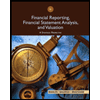
Explain the events that led to the crisis of credibility in late 2001 through 2002.
Explanation of Solution
Accounting professional:
An accounting professional is a person who performs the accounting tasks like preparation of the financial statement, analysis of the financial statement, audit, and more.
Crisis of credibility:
Crisis of credibility refers to the situation when the investor is not relying on the credibility of the company’s financial information.
The events that led to the crisis of credibility in late 2001 through 2002:
Following are the events that led to the crisis of credibility in late 2001 through 2002:
In December 2000, Company E acknowledged the accounting irregularities and filed the bankruptcy. Shortly after, Company W committed accounting fraud to increase the profit in its financial statements.
Other than these two main cases, there was immense number of cases of accounting fraud. This series of cases led to the crisis of credibility among the investors. Investors and financial professionals were no longer relying on the financial statements of the company to evaluate their financial health.
Thus, the frauds committed by the companies led to the crisis of credibility because the financial professionals were not relying on the credibility of the financial statements of the companies.
Want to see more full solutions like this?
Chapter 1 Solutions
PRINCIPLES OF AUDITING & OTHER ASSURANC
- Business/Professional Ethics Directors/Executives...AccountingISBN:9781337485913Author:BROOKSPublisher:Cengage
 Financial Reporting, Financial Statement Analysis...FinanceISBN:9781285190907Author:James M. Wahlen, Stephen P. Baginski, Mark BradshawPublisher:Cengage Learning
Financial Reporting, Financial Statement Analysis...FinanceISBN:9781285190907Author:James M. Wahlen, Stephen P. Baginski, Mark BradshawPublisher:Cengage Learning - Principles of Accounting Volume 2AccountingISBN:9781947172609Author:OpenStaxPublisher:OpenStax College



